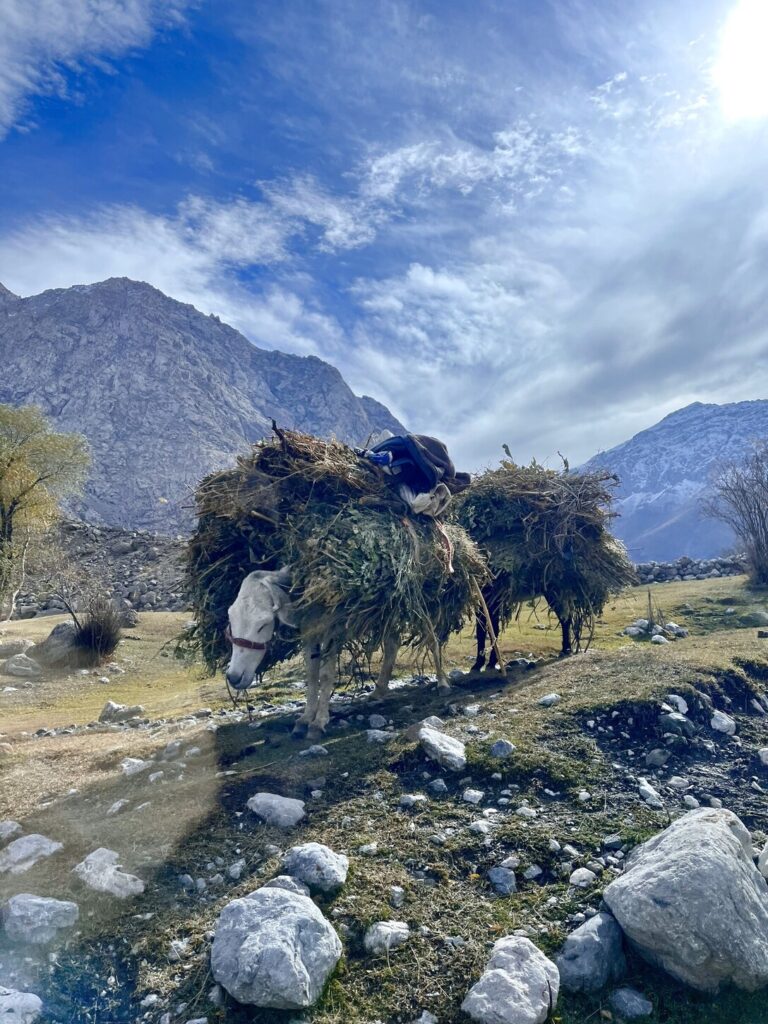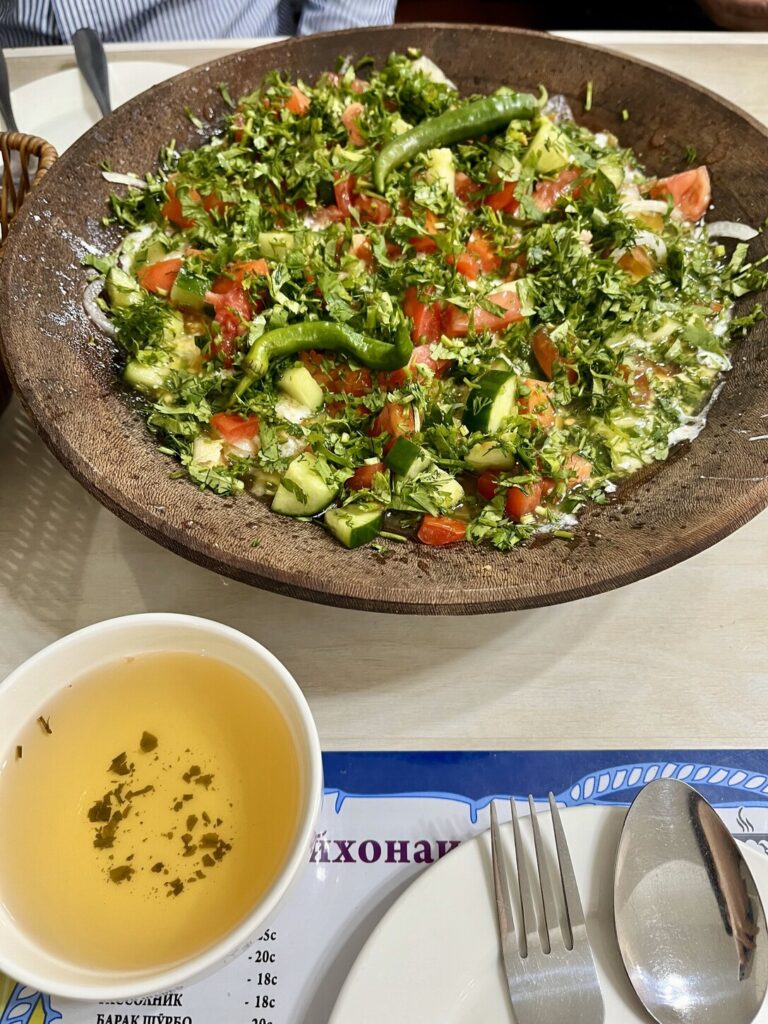This was a result of me itching to add not only another country to the trip, but also to collect stamps in my passport before the world slowly phases them out. WHAT IS THE POINT OF HAVING PAGES IN A PASSPORT ANYMORE?! I don’t seem to mellow with age. Anyway, see my previous Tajikistan posts on the Pamir Highway from 2020 here.


The Uzbek-Tajik border was an hour’s drive away from Samarkand. We set off at 6.30am and saw the sun slowly rise along the way. The last time I crossed a land border in Central Asia they didn’t wanna let me through because Covid. Now I’m happy to report that the cheeky immigration officers who are curious about where you’re from are back. First off, we left our Uzbek car and walked to the Uzbek side of the immigration office to stamp out. Even at 7.30am in the morning there were people trying to jump the queue. Then we walked a short distance across no man’s land to the Tajik side of immigration. This side was so lax, that there were no immigration officers in the hut and I walked right through it before a friendly babushka gestured to me to come back. From there, we stamped into Tajikistan’s Sughd province, hopped into our Tajik car, and drove 30min to Panjakent. Nothing has changed, president Emomali Rahmon’s portraits are still plastered everywhere.


Panjakent is the nearest city to this border crossing. Not much to buy at the central bazaar, but more to soak in the atmosphere of market day.


Thence began our drive to seven lakes. The road very quickly became unpaved as we headed into the mountains. The lakes each have their own shade of vibrant blue/green due to different minerals present in the water.












The unpaved road becomes very rough on the way to the last lake. On the way up, the engine stalled, but our driver turned the engine off and on and it worked again.


As we headed back, the same thing happened on the same section of the road. He did the same thing and we continued on. Miraculously, we managed to drive (or roll) downhill all the way to the first lake. Then the stalling increased in frequency, and the distance the car could move with each restart rapidly decreased. We would keep waiting for the engine to rest, then restart, then roll a few meters before stalling again. There came a point where restarting it didn’t work, even as he tortured the accelerator and the car sounded like it was gonna explode. Somehow, we managed to stall at a village called Shing, where somehow, he had mobile signal to call for back up.




The back up car arrived less than an hour later. I don’t know what happened to our original car and driver; they just told us to hop into the new one with the new driver. By the powers of google translate, our new driver told us that this was the first time something like thing has happened and he would like to pay for our lunch in Panjakent as an apology (against our feeble protest). During lunch (it was more like 3pm), another driver arrived to send us to the border, where our Uzbek driver was waiting. So even though I nearly peed myself thanks to drinking coffee at the last lake and having no where to relieve myself thanks to car troubles, I will still recommend this private tour (linked here) because even in the worst of circumstance, things were sorted out surprisingly quickly.


So the 8h day trip became an 11h one, no thanks to inconvenient road blocks in Samarkand that prolonged the drive back.

Hi! I am Joey, a University student from Singapore, attempting to show my appreciation for the world’s most powerful passport by literally milking its visa-free benefits one country at a time. I describe my travel budget as shoestring and travel style as audacious.

Slide into my comments section...